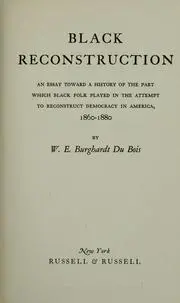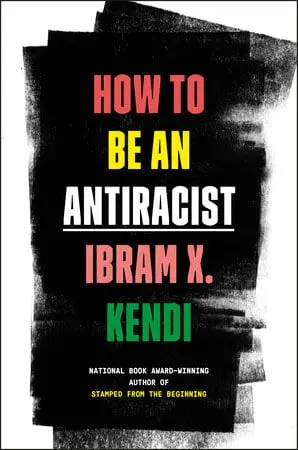The PEN Ten is PEN America’s weekly interview series. This week, PEN America’s Public Programs Manager Lily Philpott speaks with professor, columnist, and National Book Award Winner Ibram X. Kendi, author of the recently published book How to Be an Antiracist (One World, 2019).
1. What was the first book or piece of writing that had a profound impact on you?
I can’t say a single book or piece of writing, but a reading time that most profoundly impacted me. I started graduate school in the fall of 2005, I felt behind. My classmates kept mentioning all these books I had not read. I was not an avid reader in undergrad. That all changed. I embarked on a reading binge to catch up. I read over 100 books during my first year in graduate school, which profoundly impacted me, nurturing my love of reading. I’ve been avidly reading ever since.
2. How does your writing navigate truth? What role does narrative play in how you shape the truth in your work?
Navigating truth is my writing. As a scholar, I am not striving to be objective. I am striving to share the truth, even when the truth challenges me and my ideas. Truth is complicated. It is difficult to share the multi-layered truth in abstract ways. Narrative allows me to share truth in its personal and societal complexities.
“Writers point to the problem, to whether and what people need to resist.”
3. What does your writing process look like? How do you maintain momentum and remain inspired?
I tend to finish my research, clarify my thoughts, and organize my points before I begin writing books and essays. In other words, I judiciously prepare to write. If I haven’t completely finished my preparatory work, and I have to conduct research, clarify, and organize my thoughts while I write, then my writing is not as good. And when my writing is not as good, it is difficult to maintain momentum. It is difficult for me to remain inspired. Good writing inspires good writing.

4. What is one book or piece of writing you love that readers might not know about?
The book that came to my mind first is the book W.E.B. Du Bois once called his magnum opus. I’m not talking about The Souls of Black Folk. I’m talking about Black Reconstruction in America, published in 1935. The book is most known for taking to task the Jim Crow historian’s propaganda that the Reconstruction period following the Civil War was nothing but corrupt Black politicians and voters (and their northern allies) terrorizing innocent White southerners. But the writing, especially in the first few chapters and the last few chapters, is unbelievable.
5. How can writers affect resistance movements?
Writers point to the problem, to whether and what people need to resist. Take the problem of race in America. Racial inequities exist in nearly every sector of society. For example, Black people have been twice as likely as White people to be unemployed for nearly 50 years. The cause of this racial inequity is either there’s something wrong and inferior about Black workers, or racist policies. The writer can show how there’s nothing wrong with Black people, or any other American group for that matter, and document policies and power as the problem. Resistance movements typically challenge power and policy. The writer can point the way to resistance, to resistance movements.
6. What is your favorite bookstore, or library?
The Schomburg Center for Research in Black Culture is my favorite library. It is one of the largest repositories of information on people of African descent in the world, located in one of the global centers of Black life: Harlem. As a researcher of Black life, it is a palace, a historic palace that pretty much all the researchers of Black life have been using for decades.
7. What is the last book you read? What are you reading next?
I’m in the middle of David Blight’s brilliant biography of Frederick Douglass that absolutely deserved the Pulitzer Prize. Next up, I’ll be reading an advanced reading copy of Imani Perry’s Breathe: A Letter to My Sons. I have so much respect for Professor Perry’s work, and I have heard nothing but admiring comments about this book, which comes out in September.
“We are told stories to understand the world, to understand our place in this world. Stories are like the soundtrack of truth.”
8. What do you consider to be the biggest threat to free expression today? Have there been times when your right to free expression has been challenged?
I consider the assault against truth—scholars, journalists, science—to be the biggest threat against free expression. It seems as if everything is being reduced to opinion, leading people to dismiss truth they don’t like as a different opinion. If a fact undermines one’s perspective, then instead of changing one’s perspective, we have so many people who dismiss the facts. This is creating a situation where we don’t have the common ground of truth and science to freely express and debate our views.
9. How does your identity shape your writing? How does the history of where you are from shape your identity, and in turn, your writing?
My identity as an African American male allows me to use personal narrative when writing about anti-Black racism and discuss how it has affected me and other Black people like me. How does my history of where I am from shape my identity, and in turn, my writing? I answer that question in detail in my new book, How to Be an Antiracist.
10. What is the most daring thing you’ve ever put into words? Have you ever written something you wish you could take back?
Without question, the most daring thing I’ve ever put into the words is How to Be Antiracist. As someone who’s deeply private, I bore many of my most private moments to the world. I bore my most shameful moments to the world, especially those shameful times in my life when I thought there was something wrong with Black people, when I spent my time resisting Black people instead of racism, when I was being racist. The book is in part a confessional. I was daring to write the book in that way. But then again, I know the heartbeat of antiracism is confession.
11. What advice do you have for young writers?
The key to great writing is great ideas. There are many people who can put together a beautiful sentence. But what makes a sentence memorable is the idea it projects. I would advise spending as much time honing your ideas as you do honing your writing. And do not be shy about putting out new ideas, radically different ideas, ideas that turn the world upside down and right side up. Do not be shy about pushing (or pushing past) the bounds of grammar or writing conventions. Paint the world with words.
12. Which writers working today are you most excited by?
I’m excited by so many writers. Too many to name here, and I feel like I will leave someone out. So forgive me for not naming any. But I will say there are a legion of writers documenting racism and Black life and human beauty (and ugliness) in fascinating ways through fiction and nonfiction. They are my excitement.
13. Which writer, living or dead, would you most like to meet? What would you like to discuss?
I would like to meet W.E.B. Du Bois. I chronicle his adult life as this journey from a dueling consciousness of antiracist and assimilationist ideas to more a single consciousness of antiracism. I’d like to discuss this with him; and hear his reflections on his own ideological evolution. As someone who only recently started using personal narrative in my scholarship, I’d love to get Du Bois’s thoughts on this technique since he was a master at it. And of course, I’d be interested to learn what Du Bois thinks about the current racial politics in the United States and abroad.

14. Why do you think people need stories?
From infancy, we are told stories. We are told stories to understand the world, to understand our place in this world. Stories are like the soundtrack of truth.
15. Your newest book, How to Be an Antiracist, is infused with elements of memoir, along with instructions on how to be an antiracist. You have written that being antiracist requires regular, critical self-examination: How did you prepare to do that self-examination, and write those portions of your book? Are there memoirs you returned to as inspiration while doing so?
When I read The Autobiography of Malcolm X closely, I read about someone who is constantly self-examining himself and constantly self-critiquing himself and constantly changing. It is a story of personal growth and change at the same time Malcolm X is striving for societal growth and change. I kept returning to this book and its courage as I wrote How to Be an Antiracist.
Ibram X. Kendi is a New York Times bestselling author and the founding director of the Antiracist Research and Policy Center at American University. A professor of history and international relations and a frequent public speaker, Kendi is a columnist at The Atlantic. He is the author of Stamped from the Beginning: The Definitive History of Racist Ideas in America, which won the National Book Award for Nonfiction, and The Black Campus Movement, which won the W.E.B. Du Bois Book Prize. Kendi lives in Washington, D.C.
